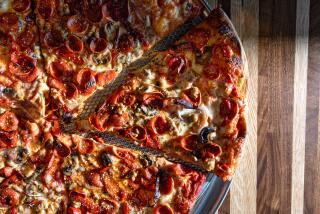It’s Hot, but Is It Safe? Improper Use of a Microwave Oven Can Leave Harmful Bacteria Alive in Your Food
- Share via
The microwave oven is a popular place to prepare foods, but zapping those leftovers doesn’t necessarily make your food free of harmful bacteria.
The U.S. Department of Agriculture offers the following advice for safe cooking with the microwave oven:
* Arrange meat and poultry pieces uniformly in a covered dish so steam can help kill bacteria and promote uniform heating. Stir the food and turn the dish several times.
* After cooking, allow the food to stand for the time specified.
* Use a microwave temperature probe or check with a meat thermometer to ensure a safe temperature--160 degrees for red meat, 180 degrees for poultry. Check in several spots.
* Cook stuffing separately from poultry.
* Debone a roast. Turn it several times during cooking. Check its temperature for safety. Let the meat stand wrapped in foil for at least 20 minutes so that steam can complete the cooking.
*
Other sensible precautions when using the microwave:
* Discard a casserole if it was thawed in the microwave but forgotten and left there for more than two hours. Cooking it won’t destroy some harmful bacteria that could have formed.
* Apply the practices of steaming, turning the dish and observing standing time when cooking fish and other foods.
* Don’t use the microwave for deep-frying, canning or heating baby bottles. A microwave oven doesn’t allow adequate temperature control for safe results.
* Stay with the oven when microwaving popcorn, because heat buildup can cause a fire. Time heating according to instructions, but lean toward the shorter time. Some ovens can scorch popcorn within two minutes.
* Don’t dry or disinfect clothing or other articles in the microwave because of the risk of fire.
* Use only microwave-safe utensils. Hot food melts some plastics such as margarine tubs, and the melted plastic can contaminate the food.
* It’s a good idea to use glass for fatty foods, which get particularly hot, but not all glass and ceramics are microwave-safe. Here’s a quick test for glass: Microwave the empty container for one minute. It’s unsafe for the microwave if it’s warm, OK for reheating if it’s lukewarm and OK for actual cooking if it’s cool.
Source: U.S. Department of Agriculture
More to Read
Eat your way across L.A.
Get our weekly Tasting Notes newsletter for reviews, news and more.
You may occasionally receive promotional content from the Los Angeles Times.










